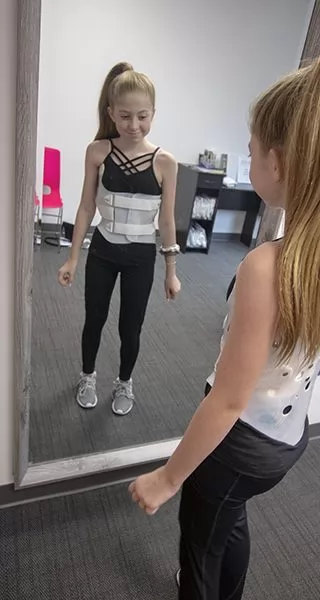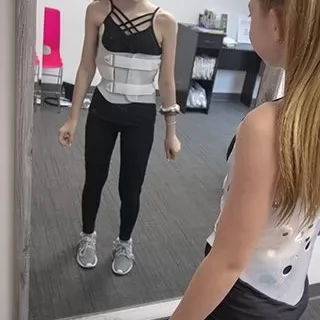Body Orthoses
Product Categories
Body Orthoses
TRUNK ORTHOSES
Trunk orthoses are orthopedic devices used to support the spine, back, and pelvic region, helping to reduce pain, provide stability, and assist in the treatment process. Trunk orthoses are commonly used during recovery after spinal disorders, injuries, and surgeries. These orthoses help maintain proper spinal alignment, prevent joint damage, and allow patients to perform daily activities more comfortably.Types of Trunk Orthoses:
Lumbar Corsets (Lower Back Orthoses):Indications: Used for lumbar disc herniation, lower back pain, backaches, and postural disorders.
Features: Lumbar corsets are designed to wrap around the lower back to restrict movement in the area, support back muscles, and reduce pain. They are usually made of elastic, adjustable, and lightweight materials.
Example: Lumbar support orthosis: Applies pressure to the lumbar area, allowing muscles to rest and pain to decrease. Suitable for daily use and effective for mild pain.
Thoracolumbosacral Orthosis (TLSO):
Indications: Used in the treatment of spinal fractures and scoliosis (spinal curvature). Fully stabilizes the spine to accelerate recovery.Features: TLSO extends from the upper back to the pelvic region. It stabilizes the spine and keeps it in the correct position. Typically made of rigid materials such as plastic or aluminum.
Example: Boston TLSO: A widely used orthosis for scoliosis treatment. Maintains proper spinal alignment and speeds up the treatment process.
Abdominopelvic Corsets:
Indications: Provides stability after trauma in the abdominal and pelvic regions. Commonly used after abdominal surgery.Features: These orthoses apply pressure to the pelvic and abdominal areas to support the healing process. They support the abdominal muscles and aid in relaxation.
Example: Pelvic abdominal orthosis: Used after pelvic trauma or weakness, helping the patient move more comfortably.
Corset Orthoses:
Indications: Commonly used for lower back pain and muscle weakness. Preferred after surgery to maintain spinal stability.Features: Made of elastic materials, these orthoses support the lower back. They reduce spinal pressure and speed up the healing process.
Example: Mediven corset: An orthopedic corset example used to relieve lower back pain.
Pelvic Orthoses:
Indications: Used to support the pelvic region. Applied in the treatment of pelvic fractures, muscle weakness, or pain.Features: Ensures stability in the pelvic area, managing back and hip pain. Often includes stabilizing components placed around the pelvis.
Example: Pelvic support orthosis: Helps relieve pain and supports the healing process after pelvic injuries.
WHEN ARE THEY USED:
- Spinal Injuries: Used in spinal fractures, strains, and sprains.
- Back and Lower Back Pain: Speeds up recovery and reduces pain in cases of chronic back and lumbar pain.
- Scoliosis and Other Deformities: Provides essential support in the treatment of spinal curvature.
- Post-Surgical Rehabilitation: Used to accelerate recovery after surgery.
- Muscle Weakness and Paralysis: Supports body stability in cases of muscle weakness and neurological disorders.
- Trunk orthoses play an important role in speeding up recovery, managing pain, and helping patients live more comfortably.


